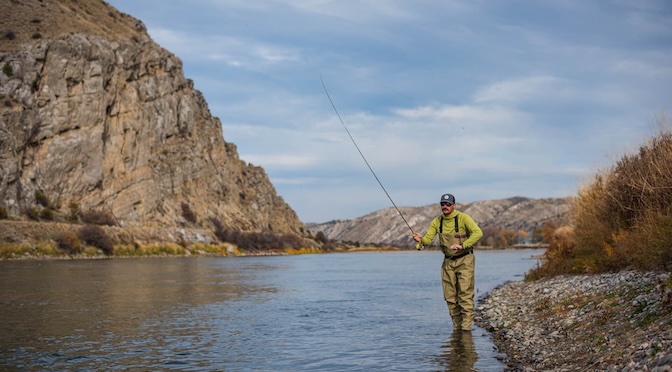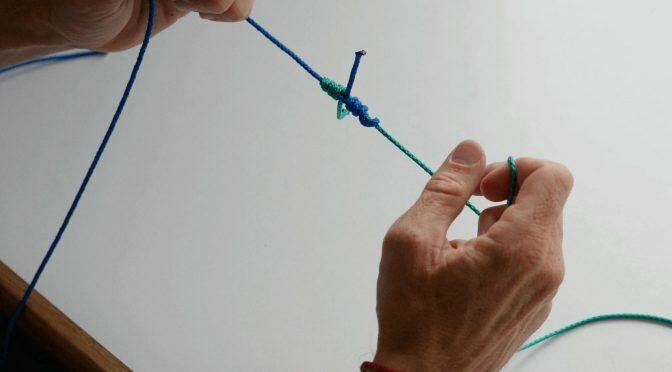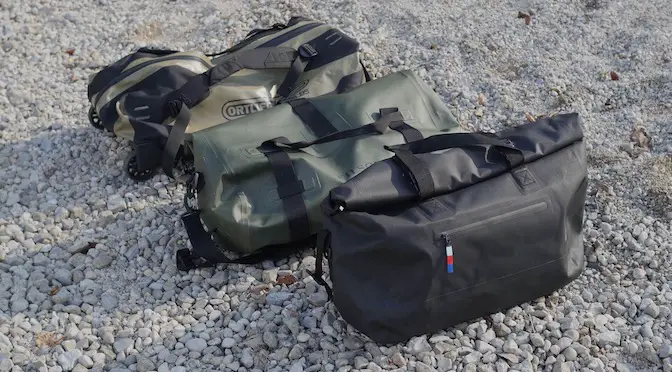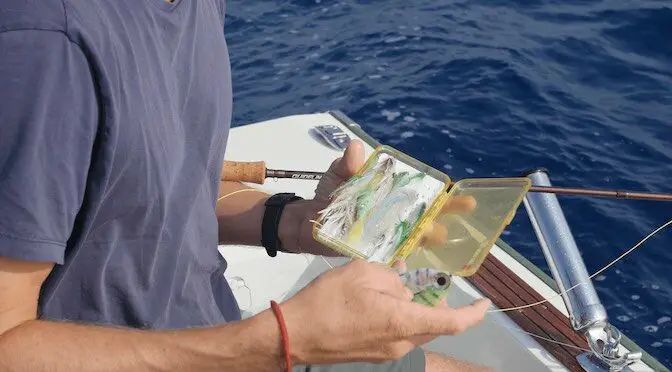Last updated on November 10th, 2025.
- Can YETI’s new backpack deliver? Thoughts on the YETI CAYO - November 20, 2025
- How to Put a Worm on a Hook: Proven Methods for a Perfect Bait - November 18, 2025
- How to Fish in a River: An Essential Guide to Proven Techniques - November 18, 2025
The First Cast Checklist: Your Quick Guide to the Right Rod
For most beginners, the best choice is a 6’6″ to 7′ medium-power, fast-action spinning combo, which provides a versatile and easy-to-use setup for a variety of freshwater fish. This all-in-one package removes the guesswork of matching a rod and reel, getting you on the water faster.
A versatile beginner rod is typically 6 feet 6 inches to 7 feet long, with medium power and fast action. This combination offers an excellent balance of casting distance, sensitivity for detecting bites, and the strength needed to handle common species like bass and walleye. Most beginner combos come pre-spooled with 10-12 lb test monofilament line, which is forgiving, easy to manage, and effective for many situations. When preparing for a day of fishing, having the right gear is essential, and that includes a reliable waterproof backpack to protect your equipment and personal items from the elements.
What is a Fishing Rod? (And Why the Right One Matters)
A fishing rod is a sophisticated tool designed to achieve a perfect balance between flexibility for casting a lure and the strength required for fighting a fish. Choosing the right rod is critical because it directly impacts your casting distance and accuracy, how well you can feel a fish bite, and your ability to successfully land the fish you hook.
The goal isn’t to find the single “best” rod in the world, but to find the best rod for your specific needs. The ideal choice depends on where you’ll be fishing, what species you’re targeting, and the type of lures you plan to use. The right equipment makes fishing more enjoyable and dramatically increases your chances of success.
The Anatomy of a Rod: Decoding Length, Power, and Action
A rod’s core specifications are its length, which controls casting distance; its power, which is its lifting strength; and its action, which describes where it bends and affects sensitivity. Understanding these three elements is the key to selecting the right tool for the job.
- Length: Rod length, typically ranging from 4 to 14 feet, determines how far you can cast. Longer rods between 7 and 9 feet are ideal for shore fishing, allowing you to cover more water. Shorter rods, from 5.5 to 7 feet, offer better accuracy and control, making them perfect for fishing from a boat or in tight spaces with heavy cover.
- Power: Often called its “backbone,” rod power is its resistance to bending and its lifting strength. Power ratings range from ultra-light for small fish to extra-heavy for large, powerful species. For a beginner, a medium power rod is the most versatile choice, capable of handling a wide variety of common fish and lure sizes.
- Action: A rod’s action describes where along its length it bends under pressure. A fast-action rod bends mostly at the tip, offering high sensitivity to feel subtle bites and enabling quick, powerful hooksets. A medium-action rod bends in the top half of its blank, providing a forgiving, all-purpose option that’s great for beginners. While most rods fit this spectrum, some very long rods, up to 14 feet, are used for specialized techniques like surf casting or certain types of fly fishing that require understanding concepts like the role of a tippet in fly fishing.
Rod Blueprints: Choosing Your Material and Type
Beginner fishing rods are typically made from a durable fiberglass/graphite composite, and the easiest type to learn on is a spinning rod, which is designed for versatility and ease of use. These two choices are fundamental to building your first fishing setup.
The material a rod is made from dictates its performance and price.
- Graphite: Lightweight, stiff, and highly sensitive, allowing you to feel everything your lure touches. Its main drawback is that it can be brittle if mishandled.
- Fiberglass: Extremely durable, flexible, and affordable. Its flexibility is an advantage when using lures with treble hooks, like crankbaits, as it gives fish an extra moment to fully take the lure.
- Composite: A blend of graphite and fiberglass that offers a fantastic balance of sensitivity and durability, making it an excellent and popular choice for beginners.
Understanding the difference between casting and spinning rods is a key step in your selection process. A spinning rod has its line guides on the bottom and is paired with a spinning reel, making it simple to operate and ideal for beginners and lighter lures. A casting rod has its guides on top and offers more casting precision, making it better for heavier lures and stronger fish. For children, a spincasting rod with a push-button reel is the easiest option to learn.
The Target-First Method: Your 4-Step Action Plan
The Target-First Method is a four-step plan to select the right rod by first identifying your target fish and location, then choosing versatile core specs, selecting a matched spinning combo, and finally, setting a budget. This simple process turns technical details into a confident decision.
Step 1: Target Your Species & Location First, decide what you want to catch and where you’ll be fishing (from a boat or the shore). This is the most important factor in your decision.
- Panfish & Trout: A 5 to 6.5-foot rod with light to medium-light power is ideal.
- Bass: A 6 to 7-foot, medium power rod is a versatile and effective choice.
- Catfish: A 7-foot or longer rod with medium-heavy to heavy power will give you the leverage you need.
Step 2: Assess the Core Specs For your first rod, stick with the most versatile specifications. Choose a medium power rod with a fast or medium action. This “can’t-go-wrong” combination is forgiving enough for a beginner to learn on while being effective for a wide range of techniques and species.
Step 3: Select Your Rod & Reel To ensure your gear is properly balanced, choose a spinning combo. A great all-purpose beginner setup includes a 6’6″ to 7′ rod paired with a 2500 or 3000 size reel. This combination is a perfect match for targeting bass, walleye, and other common freshwater species.
Step 4: Match Your Budget You don’t need to spend a fortune to get started. A quality beginner rod and reel combo is very affordable, typically falling in the $40-$80 price range. For the best hands-on advice, visit a local tackle store where you can feel the gear and get recommendations from experts.
3 Common Mistakes Beginner Anglers Make (And How to Avoid Them)
Beginners often make three key mistakes: mismatching their rod, reel, and line; using freshwater gear in saltwater without proper care; and neglecting basic rod maintenance after fishing. Avoiding these pitfalls will save you frustration and help your equipment last for years.
- Mismatching the System: A fishing rod is part of a balanced system. The reel size must match the rod’s size for comfortable casting, and the line’s strength (or “test”) must fall within the recommended range printed on the rod itself. Using a line that is too heavy will reduce casting distance, while a line that is too light can easily break. While most beginners start with user-friendly monofilament, understanding the differences between monofilament vs fluorocarbon line will become important as you advance.
- Ignoring the Environment: Never use a standard freshwater rod in saltwater without cleaning it immediately afterward. Salt is extremely corrosive and will quickly destroy line guides and reel components. If you plan to fish in saltwater, invest in a rod built with corrosion-resistant materials.
- Neglecting Maintenance: Proper care is essential for extending the life of your gear. Always rinse your rod and reel with fresh water after each use, especially in saltwater. Regularly inspect the ceramic inserts in your line guides for cracks that could fray your line, and store your rod in a cool, dry place, preferably inside a protective case or sleeve.
Gearing Up for Success: Your First Confident Cast
Choosing the right fishing rod is about building a balanced system where the rod, reel, and line work together, a process that transforms you from a novice into a confident angler ready for the water. By following the Target-First Method, you now have the knowledge to select the perfect beginner setup for your needs.
You can feel confident in your purchase, knowing you’ve chosen a tool that will help you learn and succeed. This first rod is more than just a piece of equipment; it’s a gateway to a lifelong hobby. As you gain experience, you may find yourself exploring more specialized gear for different techniques, from learning what to wear for fly fishing to mastering advanced casting methods. But it all starts with this first, well-chosen rod.
Frequently Asked Questions
What is the best all-around fishing rod for a beginner?
For most beginners, a 6’6″ to 7′ medium-power, fast-action spinning combo is the best choice. This setup is versatile enough to handle a wide variety of common freshwater fish like bass and walleye and is very easy to learn on.
What are the three most important features of a fishing rod?
The three core features are length, power, and action. Length affects casting distance, power is the rod’s lifting strength for fighting fish, and action describes where the rod bends, which impacts sensitivity and hook-setting.
What do the numbers on a fishing reel (like 3000 or 4000) mean?
Those numbers indicate the reel’s size, which corresponds to its line capacity and the size of fish it’s designed for. Smaller numbers (1000-2500) are for small fish like trout, while medium sizes (3000-4000) are versatile for species like bass and walleye.
What material is best for a beginner’s fishing rod?
A composite rod, which is a blend of graphite and fiberglass, is an excellent choice for beginners. It offers a great balance of graphite’s sensitivity to feel bites and fiberglass’s durability, making it both effective and forgiving.
How does fishing from a boat versus the shore affect my rod choice?
Longer rods, typically 7 to 9 feet, are ideal for shore fishing because they allow you to cast farther and cover more water. Shorter rods, from 5.5 to 7 feet, are better for boat fishing as they provide more accuracy and control in tighter spaces.
Should I get a one-piece or a two-piece fishing rod?
The choice depends on performance versus convenience. One-piece rods offer slightly better sensitivity and strength, while two-piece rods break down for much easier transport and storage. For a beginner, the convenience of a two-piece rod is often the best choice.
What is a slow-action rod good for?
A slow-action rod bends through most of its length, creating a parabolic arc that is excellent for casting very light lures a long distance. This deep flex also acts as a shock absorber, helping to prevent hooks from tearing out of the mouths of fish with soft mouths, like crappie.
Why is a spinning rod recommended for beginners over a casting rod?
A spinning rod and reel combo is much easier for a beginner to operate, as it is less prone to line tangles (backlashes) than a casting setup. This makes it ideal for learning casting mechanics and using lighter lures.






